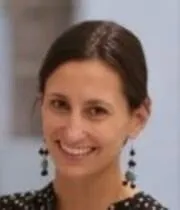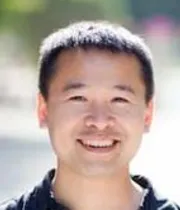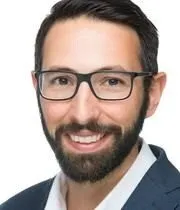AI in Drug Discovery Xchange East Coast
Target Identification
- Exploring the history and traditional mathematical best practices for data analysis
- Understanding the big trends and latest efforts to create more sophisticated ways to increase the volume of variant analysis
- Forecasting what’s next for AI and ML for genotype target identification
Senior Research Director
Alynlam Therapeutics
Paul Nioi joined Alnylam in March 2018 and leads both the human genetics and translational research functions. Building upon his depth of prior experience, he has led the creation of the Alnylam Translational Genetics Center (ATGC), putting in place a capability that allows the deep mining of genotype-phenotype databases representing hundreds of thousands of individuals. Paul’s team apply these data to identify new drug targets and to gain important insights into disease trajectories to aid patient discovery efforts. His group is also responsible for advancing new liver and CNS RNAi therapeutics for a variety of diseases.
Prior to Alnylam, Paul spent 15 years in the biotech and pharmaceutical industry including tenures at deCODE genetics, Amgen and Schering-Plough.
Paul obtained his academic training at the University of Edinburgh (BSc) and the University of Dundee (PhD).

During this session we will explain how we use AI technologies, such as machine reading and learning, to create data driven disease insights into the biological systems and molecular mechanisms that drive phenotypes, disease pathology, toxicity and drug response. For target identification we perform a perturbation analysis of a model of the disease of interest to
identify high impact targets. In indication expansion we use perturbation analysis to assess for thousands of pre-calculated disease models how effective modulation of a target of interest will be.
- Optimizing information content and assay throughput
- Implementing cellular deconvolution on bulk RNA sequencing: understanding cellular composition and genetic associations
- Insights from combining single cell imaging and RNA sequencing
Director AI
Boehringer Ingelheim
Christine Hajdin, an expert in bio and chemo informatics, she is currently a principal scientist in the computational biology group at Boehringer Ingelheim.
Christine began her career in Kevin Week’s lab where she developed a love for informatics. After graduation, she worked as a data scientist at Explorys (now IBM Watson Health Care) and then as an Investigator at Novartis. More recently she was the first computational member for Ribometrix and Flagship Lab 63. She has worked across disease areas and throughout the drug discovery pipeline utilizing machine learning methods to perform target ID, biomarker selection and compound optimization.

2:40pm – 3:10pm
1-2-1 Meetings
3:10pm – 3:40pm
1-2-1 Meetings
3:45pm – 4:45pm
- Large scale or precision data generation – or? What is the definition of large? Number of subjects or number of data points per subject?
- How many consortia is needed to achieve scale and coverage of data? Or avoid them?
- Collaborative ML/AI or let the best innovation win?
- Successes of applying ML/AI for selecting or triaging targets – is that a game changer or evolution?
- What is target selection and triage will look like in 10 years?
Global Head, Computational Biology
Takeda Pharmaceuticals
Sándor Szalma is Global Head, Computational Biology in Takeda Pharmaceuticals. He is responsible for computational biology, computational and statistical genetics, machine learning and informatics approaches supporting target discovery and validation/reverse translation and forward translation/biomarker and patient stratification in neuroscience, gastroenterology, rare diseases and oncology. He serves as a member of the governance board of Open Targets and leads the Takeda collaboration with the Exome Sequencing of the UK Biobank Consortium. Before joining Takeda, he was head of Translational Informatics and External Innovation, R&D IT in Janssen Research & Development, LLC. Previously, he was member of the industry advisory committee of ELIXIR, member of the board of the Pistoia Alliance, member of the Translational Medicine Advisory Committee of the PhRMA Foundation and led the Data & Knowledge Management Strategic Governance Group of Innovative Medicine Initiative. His past positions included president of MeTa Informatics, general manager of QuantumBio and senior director of Computational Biology and Bioinformatics at Accelrys, Inc. He was co-founder of Acheuron Pharmaceuticals, Inc. He lectured at UCSD Extension and was adjunct professor at Rutgers University in the Computational Biology and Molecular Biophysics program. He is the author of 45 scientific publications and book chapters and two patents. He received his doctoral degree in physical organic chemistry from A. Szent-Györgyi Medical University in Szeged, Hungary.

4:50pm – 4:55pm
Closing Address
Lead Generation
speed up early-stage identification and
optimization of novel candidate
compounds
- De novo compound design and screening library selection with predicted activities/modality; exploring a more diverse chemical space
- AI approaches to improve virtual screening outcome and Hit ID in general
- Advances to accelerate the path to efficient LO
- Current challenges and future direction
Senior Director Drug Discovery
Foghorn Therapeutics
Marina Nelen is Senior Director, Drug Discovery at Foghorn Therapeuticals, where her team is developing a novel class of therapies for cancer and other diseases based on chromatin regulatory system, using her company’s unique Gene Traffic Control Platform to control the time, location and sequence of gene expression. Marina has over 15 years’ experience in enabling small molecule discovery from assay development, extensive knowledge of assay technologies and screening approaches, with a proven record of success in designing discovery strategy. Her strong leadership and problem-solving skills have led to improved productivity and quality of scientific results, effective implementation of innovative techniques and approaches to drug discovery.

- For a pipeline compound that is human safe but failed for efficacy, how can AI, perhaps creating a drug repurposing combination, rescue efficacy in the original pipeline disease indication, and would this be useful?
- How can this pipeline compound be rescued via AI predicting a new indication in a rare or common disease?
Chief Collaboration Officer
Healx
Bruce Bloom is Chief Collaboration Officer of Healx, a Cambridge UK biotech using AI and drug repurposing to create novel therapies for rare disease patients. He is the founder and former CEO of Cures Within Reach, a charity that brought 14 repurposed therapies to patients. Bruce is an Ashoka Fellow, and serves corporate, charity and university boards for University of Chicago, University of Illinois, Vanderbilt University, Mission:Cure, Rediscovery Life Sciences, Falk Medical Research Trust, Findacure, Westchester Biotech Project, OneThree Biotech, ReBootRx, and IRDiRC, and is on the editorial board of ASSAY and Drug Development Technologies.

We have developed an AI-assisted lead optimization platform that can automatically carry out scaffold hopping and lead analogue idea generation, on-target and off-target binding predictions and MPO profiling of relevant ADMET properties. The design component of the platform is composed of scaffold hopping and side-chain design by our SynSpace software. Another complementary design technology in the platform is “derivatization design” a generative tool that creates novel analog and scaffold hopping sets for exploration and exploitation around lead structures using an in-silico forward synthesis.
In this poster we will discuss the utmost importance of synthetic feasibility to reduce cycle time and cost in preclinical discovery. We also compare the hit rates, synthetic accessibility scores, diversity, and efficacy of designed sets by derivatization design and deep generative design for a kinase target.
Derivatization design needs no large training set and it has been found superior for early and late stage optimization.
- What is your current practice of developing TPP (target product profile) and what opportunities you see for AI/informatics to help in the development of TPP?
- Can a fully automated software/program do as good a job as an experienced medicinal chemist to come up with synthetically feasible alternatives based on de novo ideas from a binding site?
- Can deep learning algorithms be smarter when scoring docked poses in a binding pocket?
- Can deep learning algorithms help us identify “productive” diversity vs “non-productive” diversity?
- How can AI/ML analysis of multidimensional data, incl. genetic, phenotypic and clinical data del design a most predictive model?
SVP Technology & Informatics
Acerand Pharmaceuticals
Minmin is a senior biopharma leader with 20 years of comprehensive achievements in drug discovery, development, corporate strategy and people management. She has led 8 clinical stage cross-functional teams across two therapeutic areas to deliver key milestones from IND to phase 2 readout. Minmin has delivered 10+ clinical candidates, 5 patents, 20+ peer reviewed scientific publications during as bench computational chemist and team leader. She has built a fully functional R&D facility of 100+ scientists and staff with substantial research portfolio deliverables in Shanghai, China within 5 years. 2 molecules reached FHD milestones. Minmin had extensive knowledge and working experiences of predictive modeling, machine learning, and informatics. She founded and chaired of the first international chapter of American Chemical Society in China from 2011 – 2013.

- Using AI & ML to design screen collections and set up virtual screening
- Developing models using both internal and external data for lead generation, including ADME considerations for initial campaigns
- Determining next steps for improving lead generation processes using AI & ML
Senior Director Molecular Structure & Design
Bristol Myers Squibb
Stephen is currently Senior Director, Molecular Structure & Design at Bristol Myers Squibb. His research interests center on combining machine learning, computational chemistry, and structure-based design with a focus on advancing the discovery new medicines. He received a B.S. in Chemistry from the University of Delaware and a Ph.D. in Chemistry from Penn State University.

4:50pm – 4:55pm
Closing Address
Structure-Based Drug Design
- Integration of diverse biophysical experimental data and in-silico modeling to optimize a coordinated trajectory towards structural enablement
- Project specific HTL workflows that leverage SBDD and data-driven analysis
- Uncertainty quantification and active learning strategies to drive decision making throughout the SBDD life cycle
Head of Integrated Data Science
Silicon Therapeutics
Bryce Allen is the Head of Integrated Data Sciences, leading the data analytics and machine learning team. Bryce has contributed significantly to the company in several key areas, including conformational genetics, free energy calculations, uncertainty quantification, de novo design, and database infrastructure. Before joining SiTX, he was a Postdoctoral Fellow in Biomedical Informatics at Harvard Medical School, where he worked on clinical trajectory modeling in Inflammatory Bowel Disease. Additionally, during his PhD training, Bryce worked as a Biomedical Data Scientist at the Library of Integrated Network-based Cellular Signatures (LINCS) Data Coordination and Integration Center and helped lead the architecture and development of data storage, query, and analysis infrastructure. He also developed custom ETL processes and machine-learning models for chemical and genomic entities used in the LINCS Consortium.

Preclinical Research
- Accessing new insights into disease driven by genomic and epigenomic changes focused on achieving better results in clinical trials
- Using ML to help develop genomic signatures that correlate to the identification of heightened drug sensitivities
- Uncovering new subtypes of disease that can be targeted with compounds
Chief Executive Officer
Lantern Pharmaceuticals
Panna Sharma has led biotech, high-tech and emerging technology companies for over twenty years, progressing from corporate strategy and finance into specialising in pharmaceuticals. Focused on oncology, drug development, and the use of AI and machine learning to change the risk, cost and timeline in the highly interdisciplinary field of personalised medicine, he has served as Chief Executive Officer, President and Director of Lantern Pharmaceuticals since 2018. Panna currently oversees the use of AI and genomics to develop a therapy product pipeline to innovate the rescue, revitalisation and development of precision therapeutics. He holds a Bachelor of Science in the Philosophy of Science, Neural Networks and Artificial Intelligence from Boston University.

- Utilizing translatable biomarkers to bridge clinical and non-clinical pharmacodynamics
- Use of machine learning to explore dimensionality of QSP models
- Ways of combining genetics with QSP
Director of Data Science
Valo Health
David’s experience sits at the cross section between applied engineering & statistics, biology, and drug discovery. He has degrees in electrical engineering and computer science, and formally trained in applied Bayesian statistics with an emphasis on point process modeling. Later, David received his Ph.D. in Systems Neuroscience from MIT where he studied the role of the hippocampus in episodic memory encoding. In 2013, David joined Pfizer in Kendall Square where he utilized PK/PD modeling and QSP to advance Discovery level projects in the neuroscience portfolio. In 2017, David transitioned to Sage Therapeutics where he had the opportunity to start his own function, Quantitative Pharmacology, and utilize PK/PD modeling and simulation to demonstrate mechanistic understanding of assets and utilize that understanding to influence clinical development. David is currently at Valo health, where his focus is to integrate PK/PD modeling, biological/pharmacological understanding, and advanced machine learning techniques.

Genomics in Drug Discovery
- Introduction to Big-Data: Sources, applications and challenges
- Reviewing big-data analytics & cloud computing: players, collaborative models, data integration and representation
- Implications of AI, big data analytics and robotic process automation (RPM) in advancing health care and precision medicine
Chief Executive Officer
Agility Pharma
Prasun Mishra (Ex-Genentech, Ex-NCI, Ex-NIH) is the founding president and CEO of American Association for Precision Medicine (AAPM) and chair of ACT: AAPM Coronavirus Taskforce, leading research efforts focused on preventing and curing COVID-19, cancer, and other chronic diseases; not only treating the sick but also providing knowledge/tools to individuals to live longer, healthier lives. He is a serial entrepreneur who founded his first company after graduating high school, and second company while earning his PhD. Since then, he has accumulated a wealth of experience by building, investing, and advising numerous companies. He is an investor, co-founder/board member of a few corporations, focused on accelerating drug discovery/development, data-analytics, robotics, mental health, and digital health. Prasun also served as a Scientist and Principal Investigator at Genentech, Roche. Moreover, his passion for drug development and precision medicine has led to identification of new drug targets, biomarkers, companion diagnostics, and several drugs/ combinations in the clinic. Due to his unique perspective and selfless service, he is a highly respected and sought-after mentor to many.

- How to validate in silico predictions at scale using an in vivo model
- How to move from phenotype to mechanism
- Drug discovery in specific genetic contexts
- How to overcome challenges of disparate data types
Chief Scientific Officer
BioSymetrics
As CSO and head of Life Sciences, Gabriel is expanding BioSymetrics’ scientific leadership in our key healthcare and biomedical markets for our Augusta™ platform, in areas such as biopharma R&D informatics, precision medicine, drug compound HTL generation, genomics, imaging and clinical diagnosis. Previously, Gabriel was an Associate Scientist at Brigham and Women’s Hospital where his work focused on using machine learning frameworks to predict gene and small molecule function, and identification of disease-causal genes using large-scale genomic datasets. Gabriel received his Ph.D. in Molecular Genetics from the University of Toronto. He also received his Masters of Science and undergraduate degrees from the University of Toronto.

1:00pm – 1:30pm
● The recently emerged Whole-Exome Sequencing data (200k people) became available to a few players but still lacks statistical power for drug discovery in many diseases.
● Gero is the first who managed to utilize it for a wide range of diseases successfully (CHF and other CVD, AZ, PD and other CNS, chronic pain, covid-19, RA and other immuno-inflammatory, senescence-related, ophthalmological, other diseases and conditions >1% of prevalence in population)
● The approach is built around our discovery made in collaboration with Harvard Medical School that around 60 genes lost their function because of rare mutations, some of which are the most important for diseases’ pathological pathways or protective.
● Proprietary AI converts rare protective mutations into pathways and suggests druggable targets and drugs mimicking the mutation to treat the disorder, which is a basis for an exclusive (one for a particular disease) collaborations to be first to take once at a decade opportunity with the new genetic data.
- What machine learning tools can be used for biomarkers in optimizing clinical development
- Using machine learning to predict clinical trial outcomes
- Machine learning approaches in RWD and patient profiles to make informed clinical trial decisions
- Machine learning and AI can change the clinical trial designs
Associate Director Biostatistics
Sanofi
Manisha Brahmachary has over fifteen years of research and consulting experience in statistics and bioinformatics spanning both academic medical centers and industry. Currently, she works for Sanofi-Aventis as Associate Director in Biostatistics. Manisha’s training has been in biochemistry and biotechnology. She then moved into the field of computational/ systems biology by obtaining a PhD. degree in bioinformatics from National University of Singapore. She also has a master’s in statistics from Columbia University, New York. She pursued statistical opportunities in the area of clinical trials with Takeda (Cambridge) and the Department of Biostatistics, Columbia University. Her industry experience started with Eli Lilly, she had previous experience working in computational preclinical discovery and then in biomarker clinical development. Prior to joining Lilly, she worked at Mount Sinai School of Medicine, at the Department of Genetics and Genomic Sciences and also Oncological Sciences. There she helped set up a bioinformatics lab and built expertise in the area of statistical genetics. She has worked at the Columbia University as research faculty being a part of the bioinformatics core group at the Herbert Irving Comprehensive Cancer Center. There she collaborated on multiple oncology studies, contributing to grants, papers, conferences and training.

- Working with AI and machine learning to create meaningful and actionable data interpretations
- Exploring how DNA is being regulated and how to work with DNA regulation data
- Drawing on traditional statistics to get better mileage from your AI
Director, Translational Medicine Statistics
Teva Pharmaceuticals
Liling Warren is Head, Director of Translational Medicine Statistics at Teva Pharmaceuticals. She is responsible for building and applying computational biology, ML/AI, statistical genetics, biomarker analytics to support drug discovery and development projects at Teva. She served as a member of the scientific committee in GRC (Genomic Research Consortium) to evaluate and assess drug discovery and drug repurposing opportunities using Real World Data (RWD)-based GWAS and PheWAS studies. Before joining Teva, she was Director of Statistics at Roivant, Head of US biostatistics at Acclarogen and led several large-scale pharmacogenetic and human genetics projects at GSK. She received her Ph.D. in Bioinformatics and MS in Statistics from North Carolina State University.

4:50pm – 4:55pm
Closing Address
